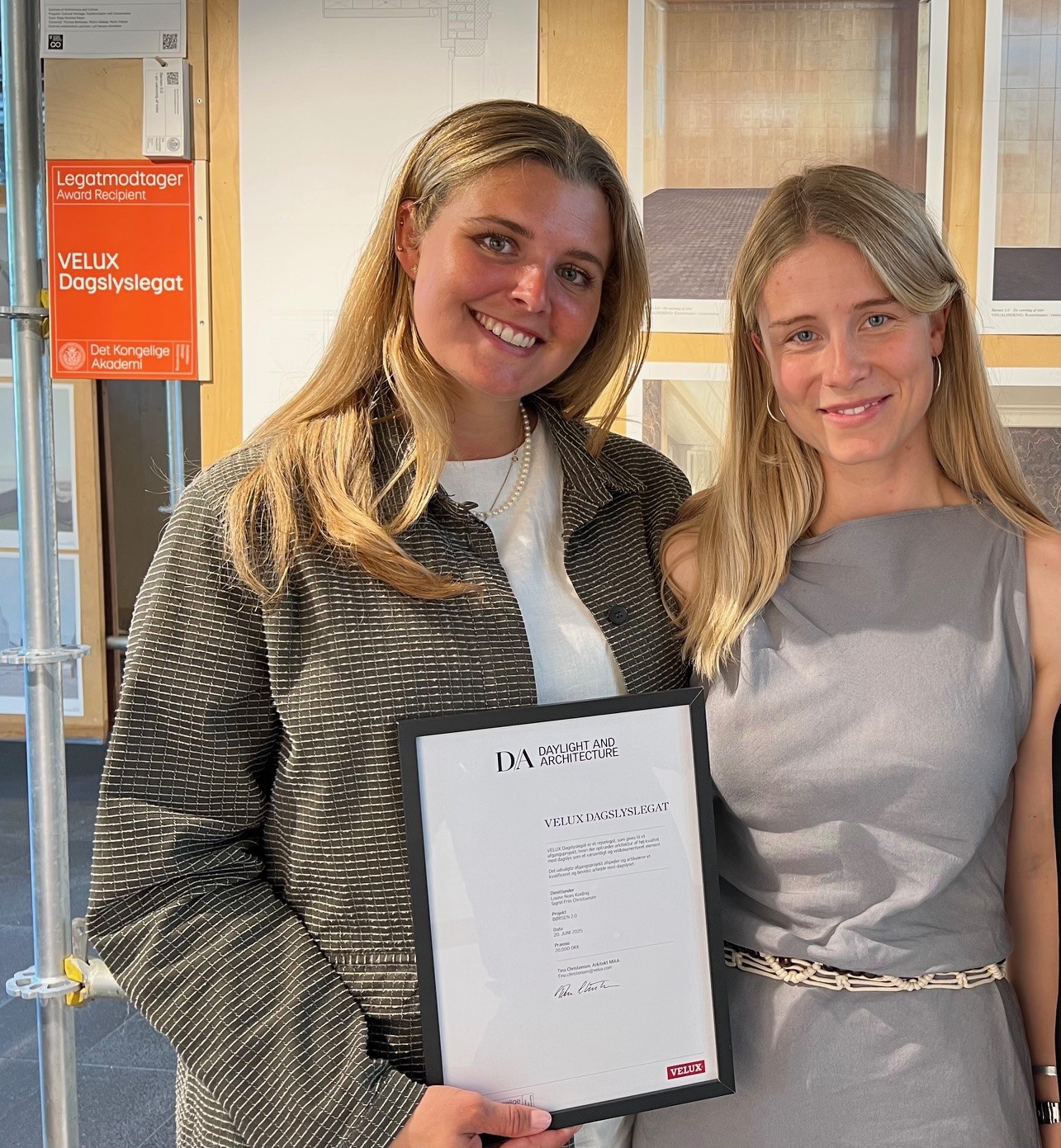Space, Satellites and Supernovas
- Meet the Winners from Eastern Europe and the Middle East Daylight Investigations

Regional winners: (From left) Anna Borisova and Kamilla Akhmetova
“One evening, after a long day at the studio I was exhausted walking home in the darkness. I saw some stars in the sky and started thinking, as I have done since I was a child, about all these processes in the universe which we can see as little points in the sky,” recounts Anna Borisova about the inspiration behind the project that secured her and team mate Kamilla Akhmetova the title of regional winner of the International VELUX Award 2018.
“I started thinking about the link between all those processes and me. I though, how can I put the light from a supernova on me.”
A guideline for city life
The project explores the issue that faces many cities around the world where access to daylight is severely limited for parts of the year.
“We have been thinking hard about what daylight means to us, and what it means to Russian cities especially. Talking about polar cities, which are very different from other settlements, we realized that daylight is kind of a guideline for city life,” explains Anna.
“It is the framework which guides all the intangible city life, including people’s routines, everyday life. All these tiny pieces of people’s personal routines make up a city. The problem with the polar circle is that they don’t have any light for parts of the year and this stops the city life. “
Out-of-the-box thinking
Anna explains that biorhythms collapse when people do not experience dawn from day to day, causing higher levels of addiction, suicide and accidents. Because of this, their project suggests directing solar rays from outer space to the clouds above the city – thus allowing citizens to have a dawn that is almost real and gentle light during the long polar nights that occur for weeks on end.
“Cloud of the Polar Light” proposes using a series of satellites, devices and mirrors to bring light from space to the ground. According to the jury, the project is a true example of out-of-the-box thinking.
Supernovas and satellites
“It was a long way to the final project,” says Anna.
First, we had the idea to provide light from far away telescopes which catches the light of supernova explosions far away, giving the light to the earth. We wanted to connect the space industry to people’s everyday lives, because these days, countries spend huge amounts of money on space missions and space crafts and telescopes.“
“We wanted to provide these supernova explosions to earth, but we did some calculations and we realized it was too complicated, very energy consuming and multi-stage process with a main focus on the process itself, not on the purpose. It was too philosophical, too conceptual,” explains Anna and says that they eventually decided on something with more social benefits and a more realistic approach.
“We decided to use low orbit satellites. We found out that Facebook and other internet companies started making drones in the atmosphere to provide internet. They are spread all over the earth, so it is a flexible net. All you need to do is just to put a special mirror on these devices. We wanted to make a passive system, which is very busy mechanically, and use spacecrafts that we already have.”
A massive shock
The news that Kamilla and Anna’s project had been chosen as one of the regional winners of the International VELUX Award 2018 came as a shock to the two girls.
“All my studio mates and I sat together and turned on the projector to watch the announcement on the 2nd of July. Everyone was nervous. First, they called the winners for Daylight in Buildings in our region and that was a girl from our studio. Everyone was very glad to hear the news,” says Anna, talking about her studio mate and IVA2018 winner Anastasia Maslova.
“We didn’t expect anything after that, since there was already a winner from our studio.“
However, Anna and her studio mates continued watching the announcement until they got to the Eastern Europe and Middle East Daylight in Buildings category.
“Suddenly, Kamilla and I saw part of our drawing come up on the screen and it was a massive shock for us. The other winner already knew some days before.”
Anna explains that she had missed calls and emails from award manager, Per Arnold Andersen, because she had been busy with her studies and had therefore not received the news before the announcement.
“Everyone, including our teachers were shocked. For several days after I couldn’t believe that we had won.”
Expanding architectural minds
Next week, Anna and Kamilla will be going to the World Architecture Festival in Amsterdam to compete for the title of Global winner of the International VELUX Award 2018.
“We are very nervous about going,” says Anna about her upcoming trip. Together with Kamilla, she will present their project in front of the internationally acclaimed jury.
Ahead of the presentations, the Russian duo and the other winning students will have a chance to workshop their projects, practice presenting in front of each other and explore the World Architecture Festival.
“I think it will be a great opportunity to meet other students and discuss our ideas with them and the jury. Discussing is the most important part of the architectural process. I think all architecture comes from communication. The days in Amsterdam will be the biggest opportunity for us to make our architectural minds bigger through communication with the jury and other students. “
Explore “Cloud of the Polar Lights” and all other winning projects here.
To find out what Anna and the other winners get up to at the World Architecture Festival next week, follow the IVA Facebook page and Instagram.



